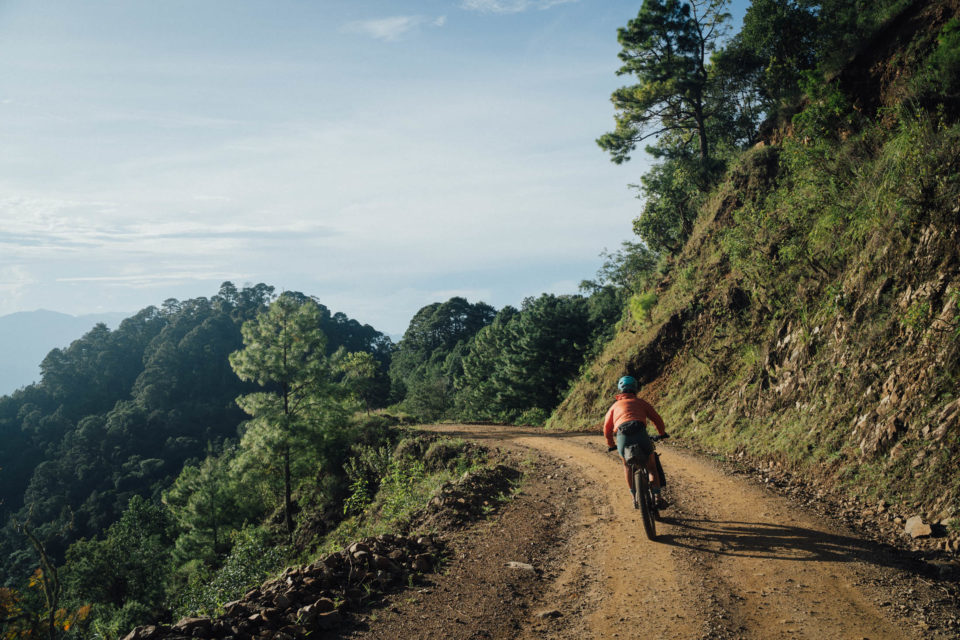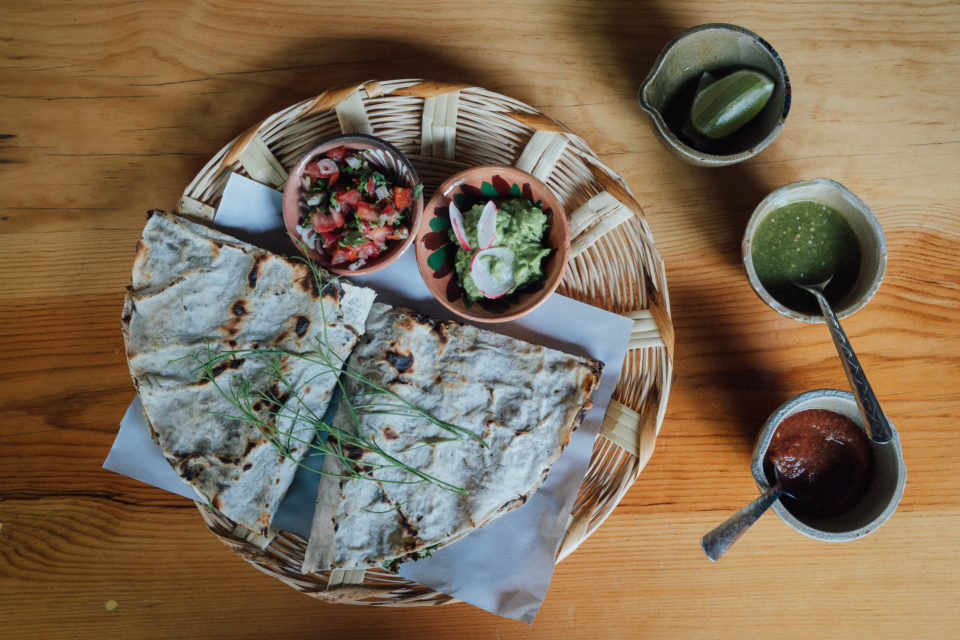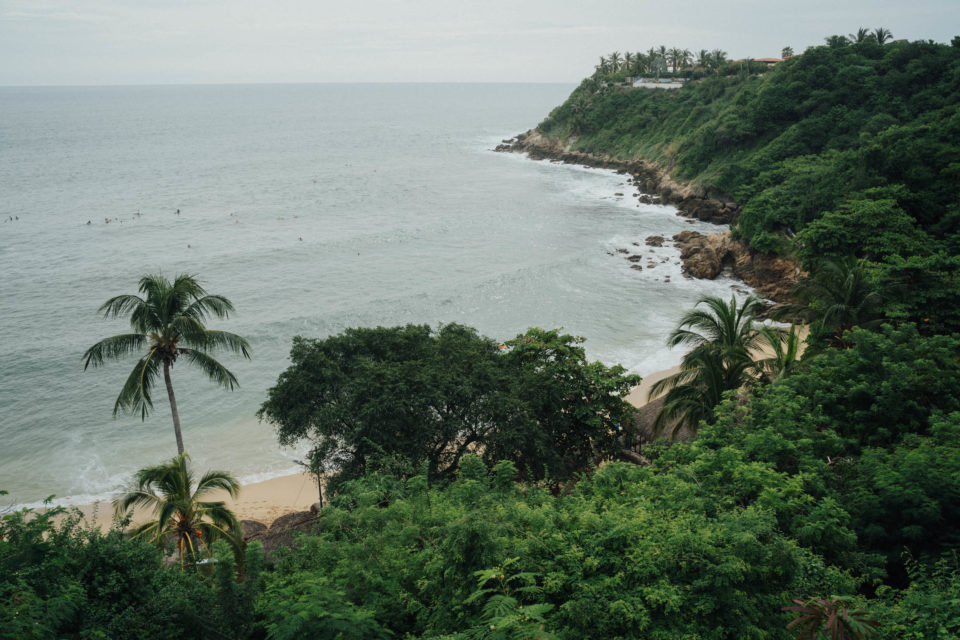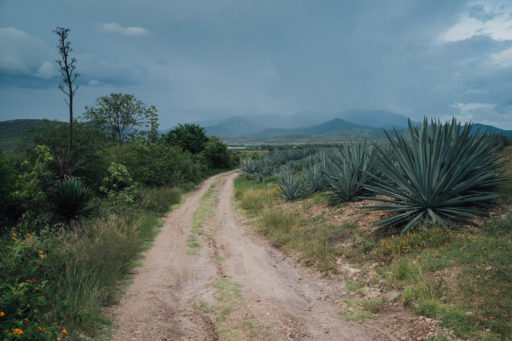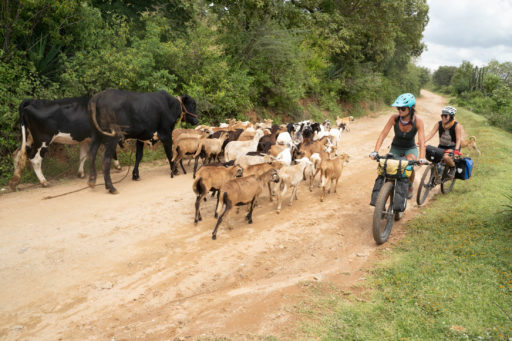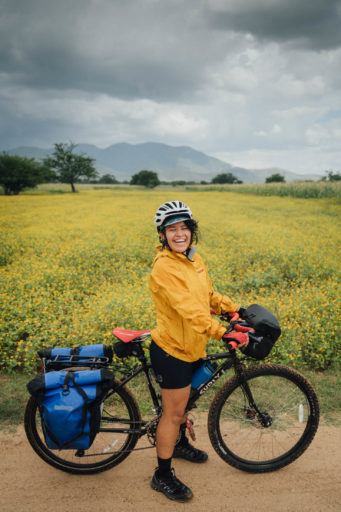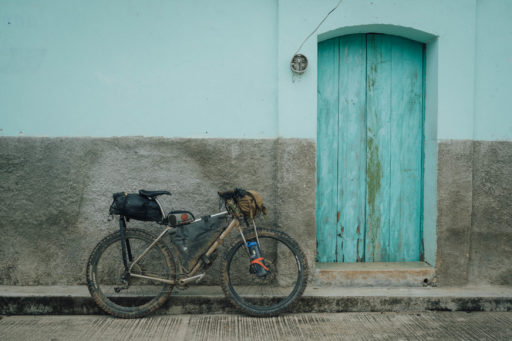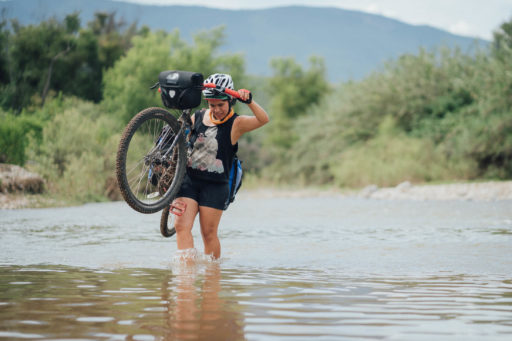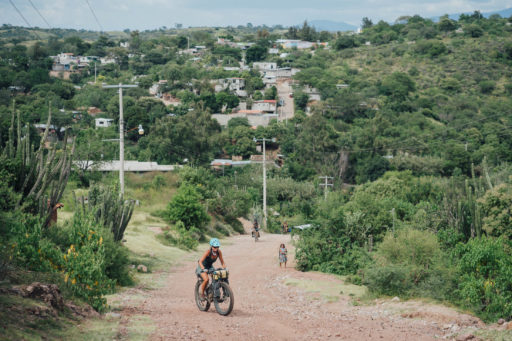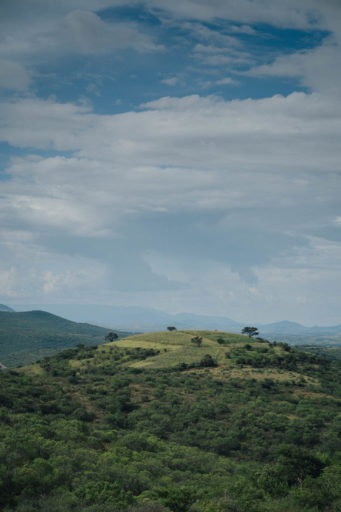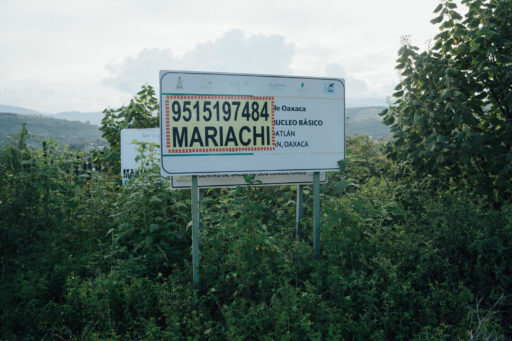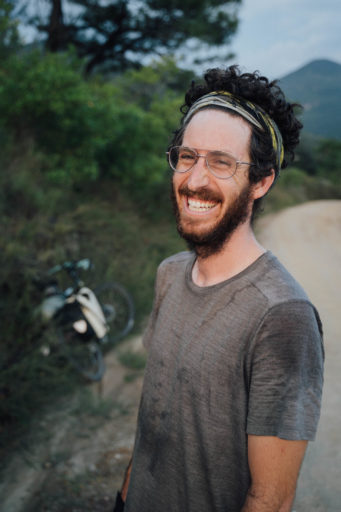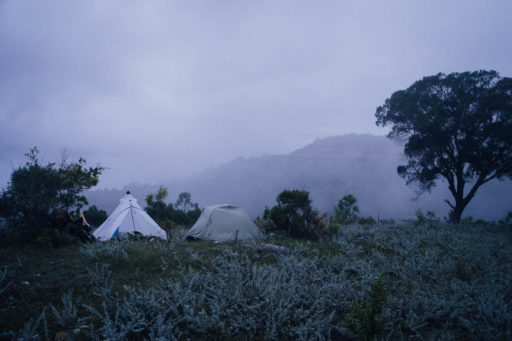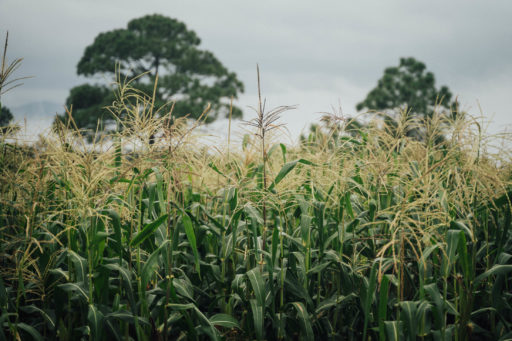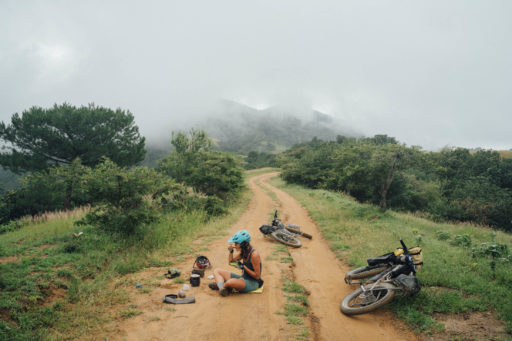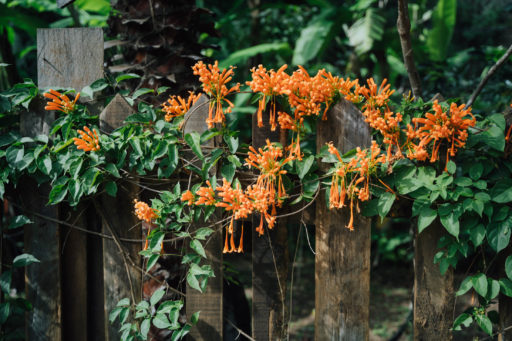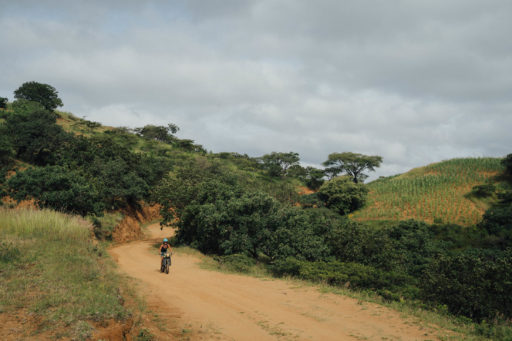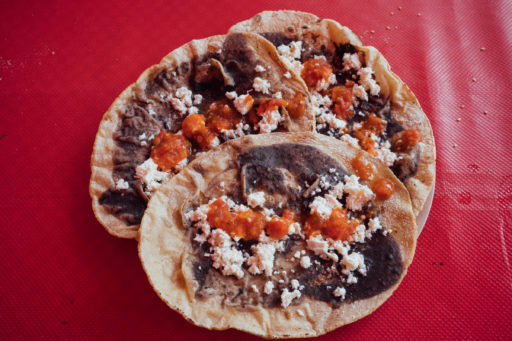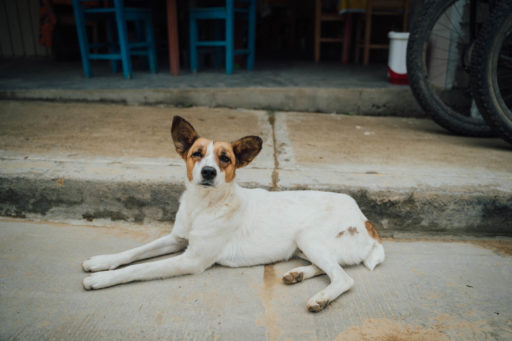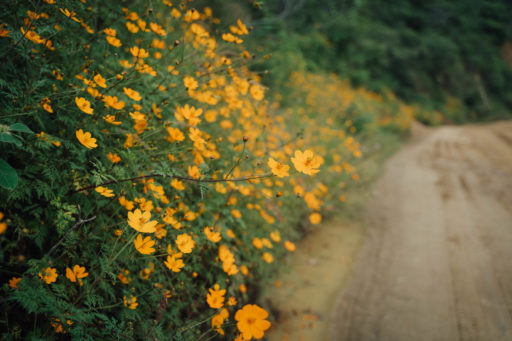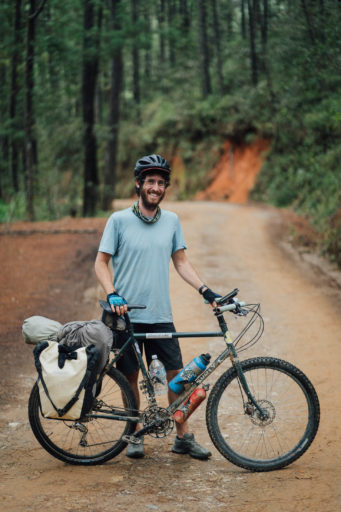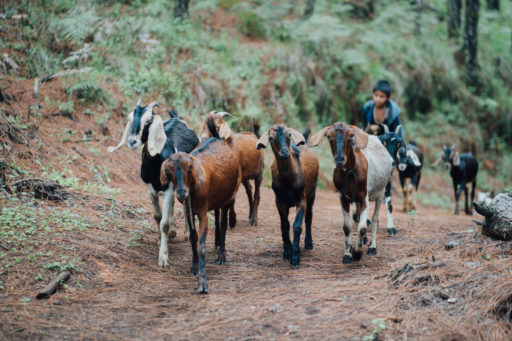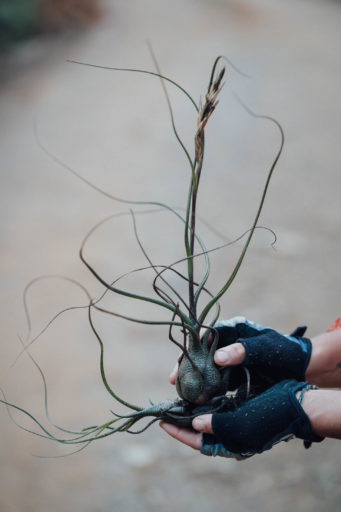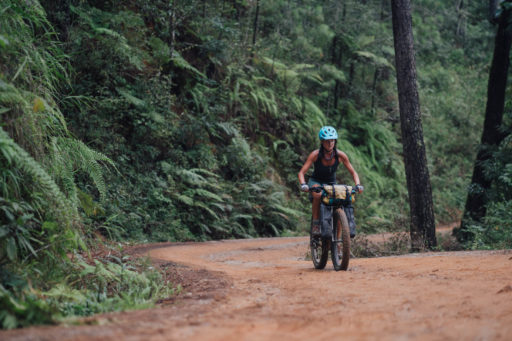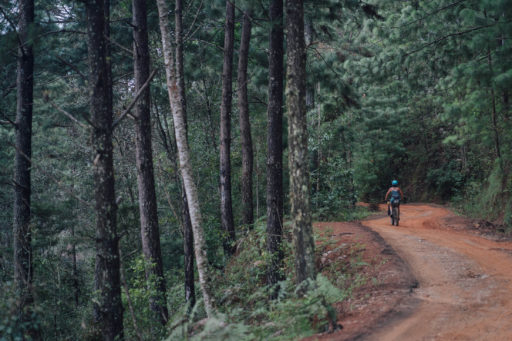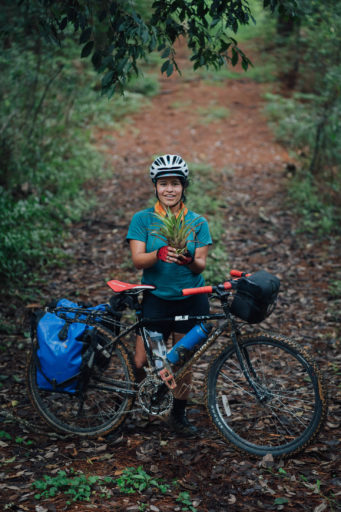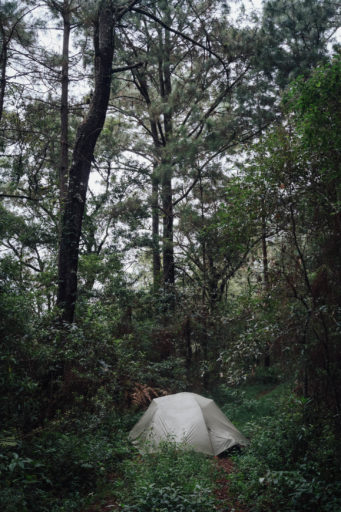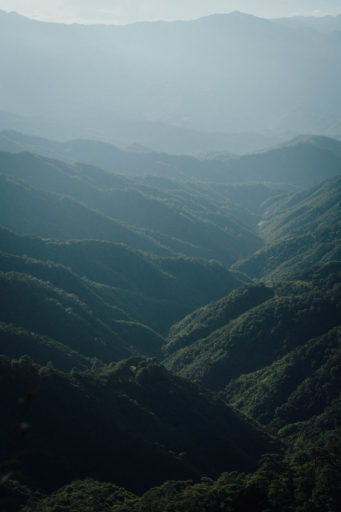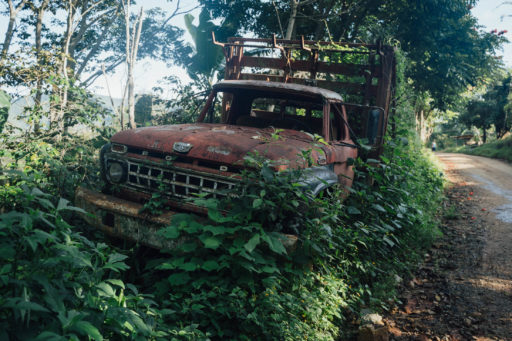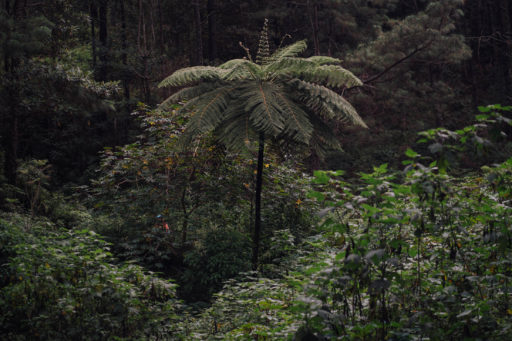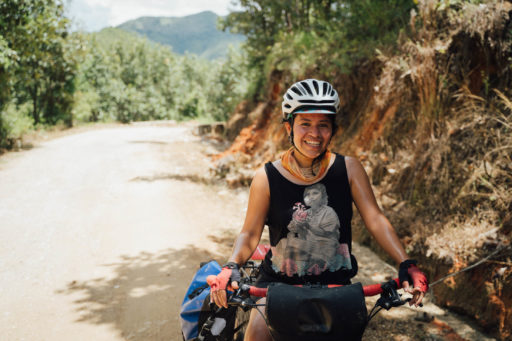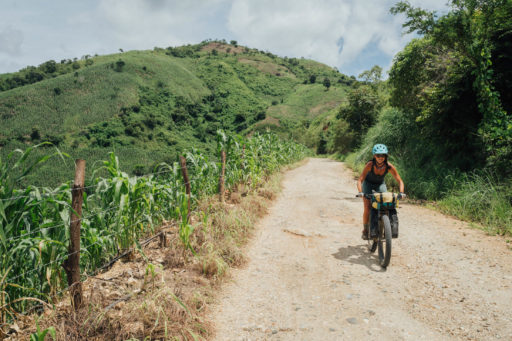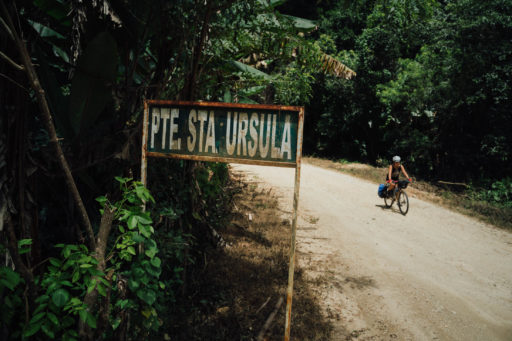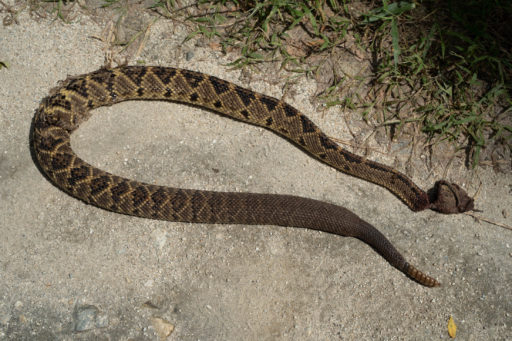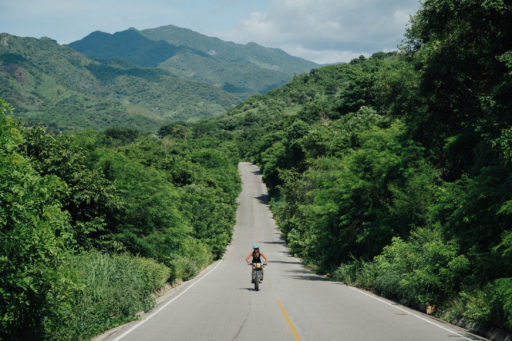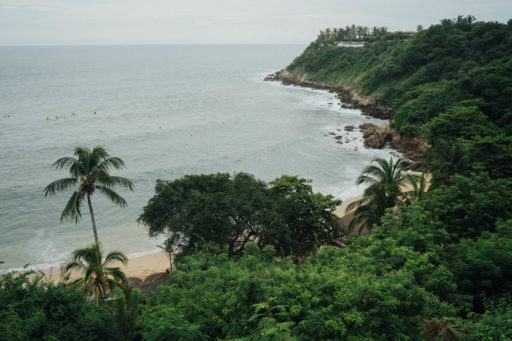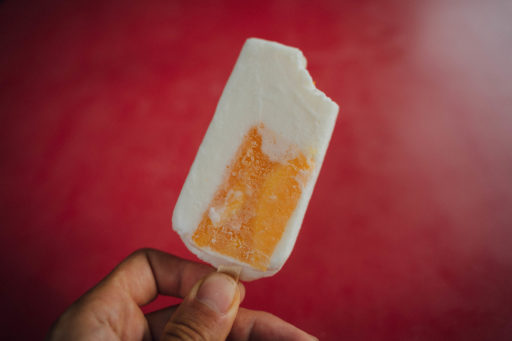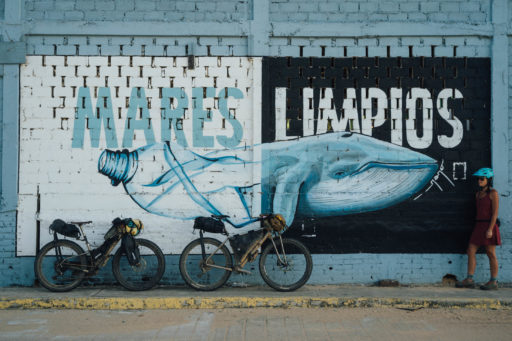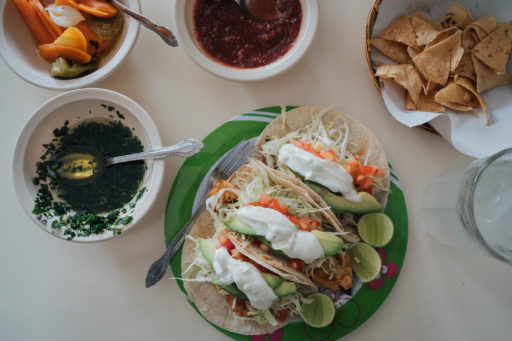Oaxaca Escondida (Oaxaca a Puerto Escondido)
Distance
156 Mi.
(251 KM)Days
3-4
% Unpaved
60%
% Singletrack
0%
% Rideable (time)
100%
Total Ascent
13,100'
(3,993 M)High Point
6,600'
(2,012 M)Difficulty (1-10)
6?
- 5Climbing Scale Moderate84 FT/MI (16 M/KM)
- -Technical Difficulty
- -Physical Demand
- -Resupply & Logistics
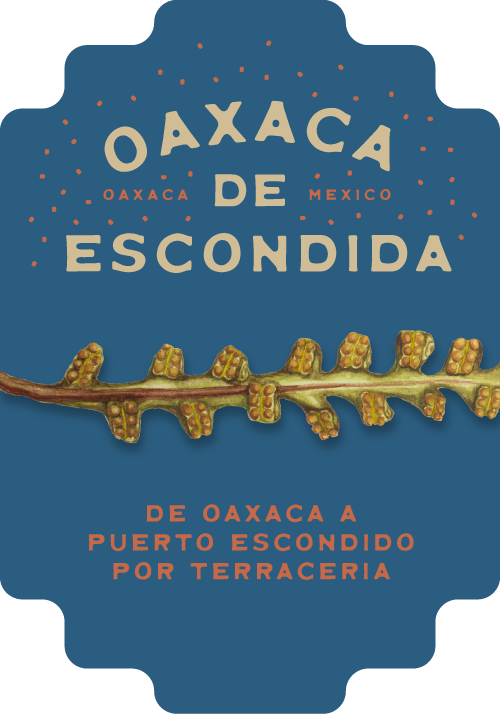
Contributed By

Cass Gilbert
While Out Riding
Note that this route was originally posted in 2015 and received a major update in June 2021. However, be aware that there is major construction in the area – a highway is being built between Puerto Escondido and Oaxaca and scheduled to be finished in 2024 – that will likely result in ongoing reroutes. Note that a grasp of Spanish is useful for negotiating these changes, along with a willingness to adjust your plans depending on how things are on the ground at the time. For a route to the coast that avoid construction work, see the San José del Pacífico Grand Dirt Tour Alternates Box Out, detailing a Mazunte connector.
When it comes to dirt road riding in Mexico, it doesn’t get much better than Oaxaca – which is saying something, because the country has a truly fabulous network of mountain, farm, and backcountry roads. This classic mountains-to-sea route runs from the beautiful and culturally rich Oaxaca de Juárez, up and over the Sierra Sur to the surfer hotspot of Puerto Escondido. In doing so, it offers a flavour of the whole state.
Wending its way out through the 1,500-metre Vallés Centrales on predominantly rural dirt roads (or terracerías, as they’re called in Mexico), it rolls its way up and down towards the high point of the route at 2,000 metres, before a spectacular descent to the coast. As well as the big reveal – that classic Oaxacan vista, a silhouetted range of lush mountains – it’s also an insight into this southern state’s remarkable biodiversity, running as it does from agave fields to pine forests to coffee plantations.
Mitla Valley route extension
If you’re coming from afar to ride to the coast, this route extension through the Mitla Valley adds some riding time and cultural interest to your trip, and is highly recommended.
Heading out to the town of Mitla on bike paths and mellow dirt roads offers the chance to explore to get to know this beautiful and culturally rich valley. As an example of what there is to see, consider stopping off in Tule and admiring the mighty Montezuma Cypress tree along the way. Then, check out the archaeological site of Dainzu, visit the market in Tlacolula (it’s delightfully hectic on Sundays) and even detour to Teotilan to window shop for textiles. The archaeological sites of Mitla and Yagul are well worth checking out too, and you could even extend this route further by riding the dirt road up to Agua el Hierba (see our Meandros en Mitla route). Doubling back on the other side of the valley, a quiet rural road links back to the coast route, passing by the pottery village of San Marcos Tlapazola and San Francisco Coatlán.
See this Oaxaca to Mitla to South Side Connector file for a suggested route. It will add around 1-1.5 days to the itinerary, depending on how many sites you visit along the way – and it will remove the busy exit out of Oaxaca. There are plenty of places to stay the night in Teotitlan and Mitla.
Back down on the coast, the busy coastal highway and Puerto Escondido come as something of a shock after a few nights camping. But still, there’s a string of fabulous beaches to visit, as well as a number of coveted surf spots. If you’re looking for a quieter coastal scene, just continue onto nearby Mazunte.
Generally speaking, this route is very straightforward and accessible, making it ideal for a broad range of riders, especially those new to dirt road touring. Yes, there’s some climbing to contend with but overall, it unfolds across far mellower terrain than most other Mexican routes on the site. Oaxaca is known nationally for the quality of its regional cuisine. Rest assured, there are also plenty of places to sample this along the way – we’ve marked a number of resupply points on the map to satisfy your memela fix.
Difficulty 6: Despite the amount of climbing, this route is well within the scope of anyone new to dirt road touring. There are regular resupply points and the surfaces are mostly well graded.
Day Rides in Oaxaca de Juaréz
For those coming from afar, the city of Oaxaca de Juaréz makes a great base to learn about Zapotec culture and its traditions. It’s well worth allotting yourself time in town to visit the botanical gardens and various nearby ruins. Indeed, the three main valleys that prod like fingers out of the city offers much more than just riding, though cycling is definitely the best way of discovering them. With this in mind, we’ve included four recommended day rides to bookend your trip – see Trail Notes for links and details. The first will introduce you to the archaeological site of Monte Albán, one of the most important cities in Mesoamerica. Another leads out on quiet terracerías to the acclaimed Centro de las Artes de San Agustín. If you want to invest in a beautiful rug, dyed naturally, a third loops out to Teotitlan del Valle. The fourth is one of my favourite half-day rides in the area. It heads out to San Felipe Tejalapam on ridgetop dirt roads, offering a fresh perspective of the area. We’ve also included a number of other multi-day bikepacking trips in the area, both long and short.
Route Development
This route is based closely on a ride that Tom and Sarah Walwyn first posted to the site way back in 2015! Inevitably, things have changed a lot since then, so it now includes a more dirt-orientated exit from the city and avoids an ongoing highway project that has seen pavement coat many segments of the original route – expect additional reroutes over time due to ongoing construction. With thanks to Tom and Sarah for the inspiration and initial research – follow their family adventures here. Please let us know if there are any further changes, and we will continue to update the route.
With thanks to outdoor educator and artist Emma Bucke for sharing her beautiful botanical illustration – a fern with curled in fronds and its sori exposed – used in the route badge. The title is a play on words between its start and end points – Oaxaca and Puerto Escondido. Escondido means ‘hidden’ in Spanish. And compared to the new highway, this ride reveals a hidden side to Oaxaca.
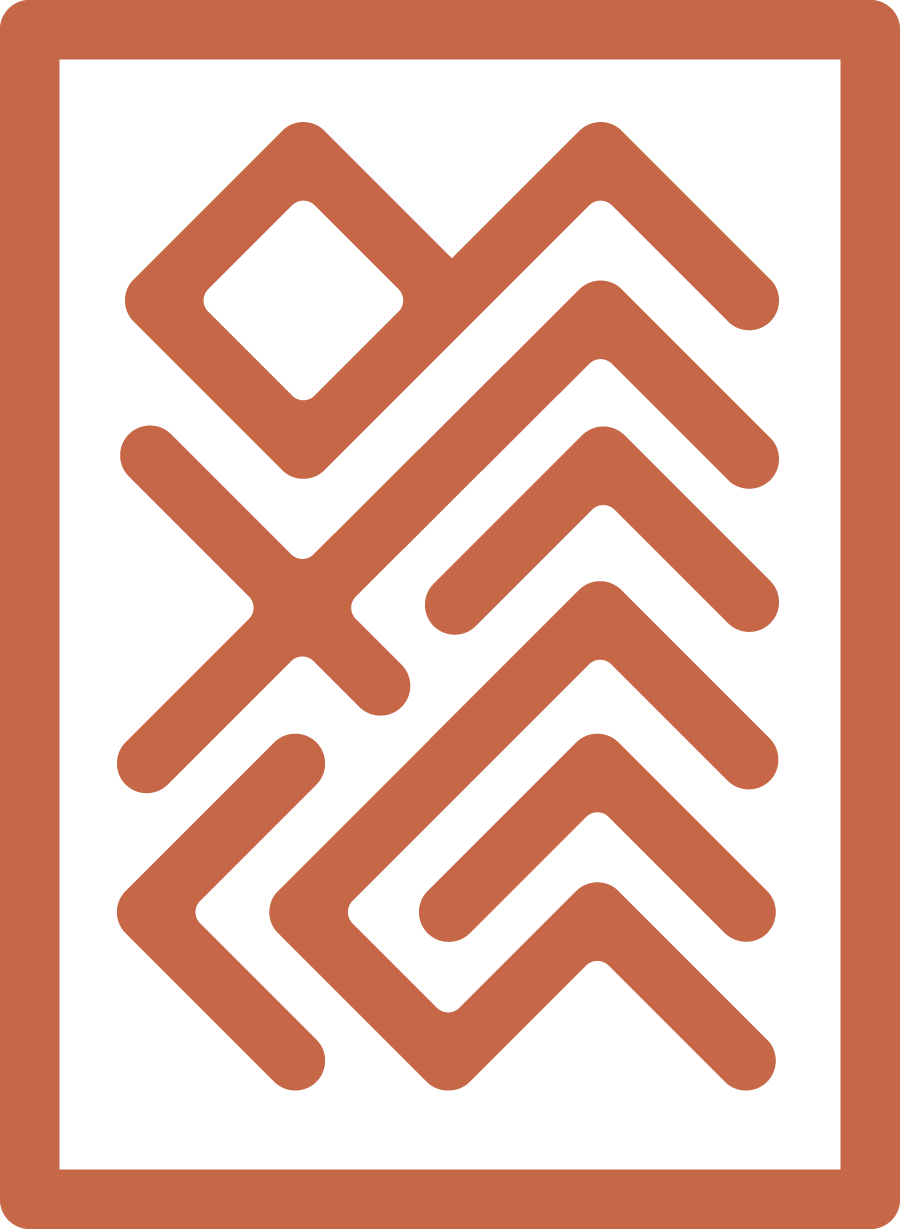 We’re thrilled to announce our comprehensive Bikepacking Routes Network guide for Oaxaca, Mexico. Find an extensive routes map, detailed information about the arts, crafts, food, and daily life in this enchanting state, plus everything you need to know about experiencing an extensive network of dirt roads and trails by bike, linking mountain ranges, pueblos, and rolling landscapes from the old capital…
We’re thrilled to announce our comprehensive Bikepacking Routes Network guide for Oaxaca, Mexico. Find an extensive routes map, detailed information about the arts, crafts, food, and daily life in this enchanting state, plus everything you need to know about experiencing an extensive network of dirt roads and trails by bike, linking mountain ranges, pueblos, and rolling landscapes from the old capital…
Check the map/gpx for marked detours due to ongoing road construction and ensure you have maps downloaded for the area. Please let us know if further updates are required. Thanks!
Submit Route Alert
As the leading creator and publisher of bikepacking routes, BIKEPACKING.com endeavors to maintain, improve, and advocate for our growing network of bikepacking routes all over the world. As such, our editorial team, route creators, and Route Stewards serve as mediators for route improvements and opportunities for connectivity, conservation, and community growth around these routes. To facilitate these efforts, we rely on our Bikepacking Collective and the greater bikepacking community to call attention to critical issues and opportunities that are discovered while riding these routes. If you have a vital issue or opportunity regarding this route that pertains to one of the subjects below, please let us know:
Highlights
Must Know
Camping
Food/H2O
Trail Notes
- Spending a couple of days in Oaxaca before you leave, soaking up the city vibes, eating memelas, and exploring the surrounding valleys.
- Wending your way along quiet dirt roads and farm tracks from one community to the next.
- Hitting the lush forest of the Sierra Sur and all its remarkable biodiversity.
- Descending to the coast after earning it with some steep climbs.
- Surfing (or surfer watching) in Puerto Escondido, a legendary surf destination.
- Best bike: A rigid mountain bike or hardtail with a 2.3″ to 2.5″ tyre is probably the capable and comfortable steed for this route, due to the mixed terrain, the extended climbs, and the often steep grades. Still, because there’s nothing ‘technical’ along the way in terms of terrain, a traditional tourer works well too. If you’re aboard a gravel bike, be sure that your gearing is comparable to that of a mountain bike, fit the widest tyres that you can (38-45mm is certainly doable but you’ll be underbiking in places), and expect to push occasionally. Whatever bike you choose, pack light, as there’s a lot of climbing to contend with. Learn more about bike and gear selection for Oaxaca in the Bikes, Rides, and Gear section of our extensive Oaxaca Bikepacking Routes Network Guide.
- Best time of year: Oaxaca is a popular destination throughout the year, with November to February being the high season. Bear in mind that during the dry season (November to April/May), dirt roads become increasingly dusty and temperatures soar as the months go by – especially as you descend in elevation. By April, the landscape also becomes increasingly dull and brown. In contrast, the rainy season (May to October) brings lush countryside and more bearable midday riding temperatures, but expect heavy later afternoon or nightly downpours. Thankfully, rain in the mountains of Oaxaca is rarely an all-day affair, unless there’s a storm system lingering on the Pacific coast or the Gulf of Mexico, in which case it can be rainy and overcast for a few days. Mid October through January are probably the best times to ride here, as the landscape is still green, the heaviest rains have passed, and the temperatures aren’t yet oppressive – within this time, November is perhaps the very best and will give you the chance to experience the Día de Muertos ceremonies too, at the beginning of the month.
- Speaking of the rainy season, it can be worth bringing a light piece of tarp to protect your bike’s chain from rusting at night. There’s are waypoint on the map for a couple of potential mud-clay trouble spots, though on the whole, the area drains well. Storm systems aside, rains mostly come in the late afternoon or at night, so don’t tend to get in the way of enjoying your days in the saddle. The rainy season has its own charms, including epic skies, storm-racing, and the chance to forage for mushrooms!
- Speaking of the dry season, be prepared for extremely high daytime temperatures (35c/95f) in the valleys and balmy nights. Humidity also increases towards the coast. You’ll need to get early starts, take midday siestas, and carry extra water.
- Road construction: Be aware that there is an ongoing highway construction project that affects sections of this route. If you ride through, please note down issues you come across with a waypoint, so we can keep riders abreast of any changes. Thank you Heather Marie for this update, in November 2021. And thank you Oliver for this one, as ridden in February 2022. For the complete route as Brad rode it in July 2022, see here.
- Looking for a packlist? Find ideas in this post.
- Generally speaking, the mountains of Oaxaca are a safe place to travel, but it’s always worth seeking up-to-date information and being vigilent in the city.
- Depending on the season, there are black flies and occasionally poison ivy too, so have some Benadryl handy if you’re sensitive to these. We’ve spotted brown recluse spiders as well, so an enclosed tent is recommended.
- Spanish language skills are recommended, as parts of this route see few foreign visitors.
- There are NO ATMs en route aside from the first day out of town, so bring cash and small bills. Try and break 500 peso notes beforehand at one of the banks in town.
- Want to get into the botanical groove? Visit the renowned Jardín Etnobotánico
de Oaxaca for a plant primer before you set off. - Oaxaca Journal by Dr. Oliver Sachs is a highly recommended read for those interested in learning more about the area, from both a botanical and cultural standpoint.
- A short ride from the centre of Oaxaca, the trail network west of San Felipe Del Agua is rife with fun cross-country singletrack. See Trailforks for details; if you’ve brought a mountain bike, a loop around High Flyer Ridge/Escalones is especially recommended.
- There is also an abundance of techy enduro trails in the area, especially up in the Ixtepeji area. Again, see Trailforks for details or check out our Hebras to Ixtepeji route, which makes a great compliment to this ride with an appropriate bicycle.
- Need repairs? My favourite shops are Bicimundo and Zona Bici. Both are well stocked and both have branches in Reforma, which are recommended over those in the city centre. Expect to generally find sealant and a reasonable selection of mountain bike tyres, right up to 29 x 2.5/2.6″ sizes.
- MTB Oaxaca is an excellent resource – it lists bike shops, trails, and day rides in and around Oaxaca.
- Consider timing your trip with Oaxaca’s famous Dia de Muertos ceremony (early November), but book accommodation in advance as things get busy at that time of year.
- Oaxaca is a six-hour bus ride away from Mexico City. ADO is a recommended bus company and generally has room for a bike or two.
- Volaris, AeroMexci, and a number of other airlines fly to Oaxaca via Mexico City or Guadalajara. Depending on the size of your bike boxes, it’s likely to cost between 350 and 500 pesos for a taxi into town – for 2 to 3 people with bikes. You can buy tickets for the official airport taxis when you arrive and it’s all regulated. Download the Didi App on your phone for the return journey, or perhaps arrange something through your hotel.
- If you want to return from whence you came, it’s perhaps easiest to hire a car at Europcar in Puerto Escondido and take a midway stop in San José del Pacífico). A large vehicle – one that fits four bikes and four people – costs around $200, including fuel and a one-way drop off (offices are near the airport). There is also an ADO/OCC overnight service to the city that takes 11 hours and generally accommodates a couple of bikes ($20-30 per person). Otherwise, you can try and fit your steed to the roof rack of one of the daytime minibuses that ply the mountain road that runs between the coast, San Jose del Pacifico, and Oaxaca City. It’s quicker than taking the big bus but a LOT windier, so those who get carsick, be warned…
- Safety: The Sierra Norte itself is a safe place to ride. However, as with any city, crime happens in Oaxaca de Juárez, both in the city center at night and on a few of the local trails during the day. If you’re out late, take a taxi home. In terms of riding, hiking, and running in areas close to the city, be especially mindful and see the safety information here for details.
- For general information about our extensive route network in Oaxaca, be sure to check out our Oaxaca Bikepacking Routes Network resource, with a Spanish translation coming soon. It includes details on getting there, bike shops, rentals, gear choices, food, arts and crafts, and worthwhile places to visit in the city and surrounding towns.
- Dispersed camping is possible along this route. Bear in mind that they are unofficial, so be discreet, respectful, and be sure to leave no trace. Arrive late and leave early. I’ve marked a selection on the map but with a keen eye, there are plenty more – especially in the more forested parts of the ride. If in doubt, it’s always best to ask for permission from the local ranch, land owner or ejido. Just explain you’re looking for a spot to spend the night and people will do their best to help out.
- I use denatured alcohol and have marked a spot where it can be bought in bulk (56 pesos for 1.5L) at a hardware store on Calle de Frey Bartolomé de las Casas (marked on the map) – it’s just south of the Zocalo, next to a paletería (by good fortune!) Ask for ‘alcohol metilico’. You can buy compressed camping gas bottles too – the shop is called La Gran Montaña and it’s on Miguel Hidalgo. It’s close to Marito and Mogli Cafe, a hip little coffee shop if you need a lift me upper. Given the number of resupplies along this route, it’s easy enough to do without a stove… but I enjoy carrying mine to reheat tortillas at night and for a morning cup of coffee.
- Lodging can be found in larger towns and along the way. Just ask around, there are always options outside of festival periods. Posada Tilcajete in Tilcajete comes recommeneded – Villa Carranza #4, Col. Centro, 71506 San Martín Tilcajete.
- There’s a wide variety of accommodation available within Oaxaca City, from budget hostels to fancy digs. If you plan on setting up a base camp to explore the area in more detail, Airbnb can be a good option. Location-wise, it’s hard to go wrong anywhere near the centre of the city but the area around Xochimilco is especially appealing. It’s the oldest part of Oaxaca and is artistic, colourful, and crammed with coffee shops.
- One of the aspects of touring in Oaxaca that I love most is that every settlement likely has tlayudas, memelas, quesadillas, or tacos. In short, you won’t go hungry on this tour. If you don’t want to bring your stove, bring a re-usable container for take-outs, like a Stasher bag or some stout zip locks.
- You’ll want to carry at least a few bottles of water with you. I’d recommend having the capacity to run around 3-4L, as campsites will invariably be dry. When you stop in restaurants, ask to fill your bottles and offer a few extra pesos, to save buying plastic ones. Otherwise, you can refill everything at the start of the day from the 20L, re-usable water jugs found in many local stores – especially if you’re 2 or more riders. Although they’re larger than you’ll need, at 20 pesos each, they’re both an economical and eco-friendly way of filling up. It can be worth carry a filter for mountain streams.
- To find out more about the culinary fare for which Oaxaca City is known, check out the Netflix series Street Food Latin America. It focuses on local legend Doña Vale and the region’s famous recipes.
- Pop into one of the many mezcal specialists or stop along the roadside and try the local tipple, distilled from agave (maguey) plants. There are many subtleties to mezcal, depending on the agave, where it’s grown, and how it’s distilled. If you want to dive deep into the mezcal-tasting experience, Mezcaloteca, in Oaxaca city, comes highly recommended, as does El Destilado.
- Visit any market for a wide variety of fruit and fruit shakes, a great start to the day. ‘Verde’, laced with celery, grapefruit, and parsley is a personal favourite. The main Oaxaca market – Mercado Benito
Juárez – behind the zócalo, is always a hive of activity and a great place to explore on foot. - A post-ride recommendation in Oaxaca? Check out La Popular for a beer or two, and good local food. The wild mushroom (setas) and garlic dish is especially good.
- Eat meat? Or rather, insects? Grab yourself a bag of chapolies – grasshoppers seasoned with lime, salt and garlic – and sprinkle them on your food or just enjoy them for afternoon nibbles.
- In Oaxaca City, Calle de General Portfilio Diaz is becoming quite the street for locally run, ‘new wave’ Oaxacan fare. From the end closest to the centre, the Boulenc ’empire’ includes an incredible bakery, a fantastic restaurant and coffee shop, and a grocery store with all kinds of homemade delights. Further up the street, Hierba Dulce is a an excellant vegan restaurant that a great menu of traditional dishes. I firmly believe that their ‘cremosa’ is one of the best desserts in town! Further up the street still, vegetarians will love the small, hole-in-the-wall ‘Casuelas’ whilst Pan Con Madre, next door, is another excellent spot for bakery products. A few steps beyond lies Macha Pacha, which sells artisanal chocolate in compostable packaging.
- Coffee? Oaxaca has you covered! Coffee is grown in the state and roasted locally. There are too many coffee shops to recommend, but try out Café El Volador, at the beautiful Plaza de la Cruz de Piedra, to get you started. The square is a great spot to hang out after a day ride, too.
- Over the highway in Xochimilco, Rupestre is a nice spot with a lovely courtyard and especially strong americanos – there’s room for bikes too – or there’s the roof terrace at AM Siempre (great gluten-free chocolate cake!) next door. Nearby Chepiche is perhaps my favourite spot in town- it’s super spacious, there’s outdoor seating, it’s great for a breakfast, and again, plenty of room for bikes. I recommend trying La Huerta! Look this place up on Googlemaps, as it’s not signposted from the road.
- If you’re after something a little special, Ancestral, in Xochimilco, Ancestral is an excellent restaurant serving beautifully presented, traditional food.
- Want to really treat yourself? Dive down the Oaxacan foodie rabbit hole by checking out the following world class restaurants: Crudo, Restaurant Alfonsina, Criollo, Agua Miel, Levadura de Olla, Origen, Hotel Sin Nombre, Teocintle, and Casa Oaxaca. You’ll need to book in advance for all of these places. My personal favourites are Levadura de Olla and the seasonal Agua Miel.
- Oaxaca is well known for its chocolate, often melted into a hot drink, and its delicious mole, which is on every restaurant menu, so be sure to get a taste of that, too.
- Agua frescas are the drink of choice in Mexico and way better than Coca-Cola! Choose from jamaica, horchata, and tamarindo, along with whatever fruit is in season – mango, papaya, or guava. Where possible, buy soft drinks in glasses bottles as these are recycled far more times than plastics.
- Paletas! Mexico’s classic ice cream on a stick tastes especially good after (or during) a long day in the saddle.
- For more about Oaxacan food and drink, and restaurant recommendations in the city, see our detailed Comida Oaxaqueño: Oaxacan Food Guide!
Day Rides
In addition to the various bikepacking routes to be found in Oaxaca (linked above), bookend your trip with dirt, gravel, and singletrack loops, rewarding ways of gaining a deeper understanding and appreciation of the area. Find a few on the Favorite Day Rides map at our Oaxaca Bikepacking Routes Network guide.
The Monte Albán and Cuilapan Rural Ramble is a challenging, roughstuff day ride that passes by the Zapotec ruins of Monte Albán en route to the Ex-Monastry of Cuilapan – a complex set in Oaxaca’s Valle Grande and Ejutla area. You can trim it down to the single loop, but I recommend the full figure of eight as it’s a wonderful showcase for Oaxaca’s traditional farming practises and inter-cropping – a combination of corn, squash, and beans to help fortify the soil and keep pests away.
For a shorter version with some short sections of trail, there’s also Monte Alban and Atzompa Rough ‘n Ruts. Either way, I highly recommend checking out Monte Alban. It’s an incredible Zapotec site and a highlight of Oaxaca City.
Venture into the Etla Valley and visit the acclaimed Centro de las Artes de San Agustín, housed in a former textile factory, by following San Agustín Etla: foothills out, railroad back day ride. It connects rolling dirt roads to San Agustín with a former railway line on the way back, making for a nice variety of surfaces. There are singletrack options too if you want to spice things up.
Interested in bringing back some a locally made rug? Check out Teotitlan del Valle – and its beautiful textiles that can be purchased direct from the makers – then the 75km Teotitlán, via Huilapam, Dainzú, and Tule is sure to add great memories to your purchase. It links up mellow trails, rural roads, and remote two-track, via the archeological site of Dainzu.
And for a fresh perspective of the area, this short loop is one of my very favourites, connecting dirt roads out to San Felipe Tejalapam. There are several ways of doing this – here’s my favourite.
With thanks to Larry at www.oaxacamtb.com sharing his vast wealth of route near Oaxaca City, via which much of my own knowledge is based.
Have a few more days?
With the right bike, this route pairs especially well with the Hebras de Ixtepeji singletrack route, which is a 2-2.5 day exploration into the Sierra Norte mountain range. Not so keen on trail riding? Here’s a dirt road alternative into the Sierra Norte that hits up some of the same spots.
And beyond…
If you have more time still, consider enjoying the nearby Tehuacán-Cuicatlán Biosphere Reserve (a 2.5-hour bus ride away) or the San José del Pacífico Grand Dirt Tour. Or even, use this ride to the coast as warm up/shakedown to a bigger ride south, following the Trans Mexico (Sur).
Terms of Use: As with each bikepacking route guide published on BIKEPACKING.com, should you choose to cycle this route, do so at your own risk. Prior to setting out check current local weather, conditions, and land/road closures. While riding, obey all public and private land use restrictions and rules, carry proper safety and navigational equipment, and of course, follow the #leavenotrace guidelines. The information found herein is simply a planning resource to be used as a point of inspiration in conjunction with your own due-diligence. In spite of the fact that this route, associated GPS track (GPX and maps), and all route guidelines were prepared under diligent research by the specified contributor and/or contributors, the accuracy of such and judgement of the author is not guaranteed. BIKEPACKING.com LLC, its partners, associates, and contributors are in no way liable for personal injury, damage to personal property, or any other such situation that might happen to individual riders cycling or following this route.
Please keep the conversation civil, constructive, and inclusive, or your comment will be removed.








